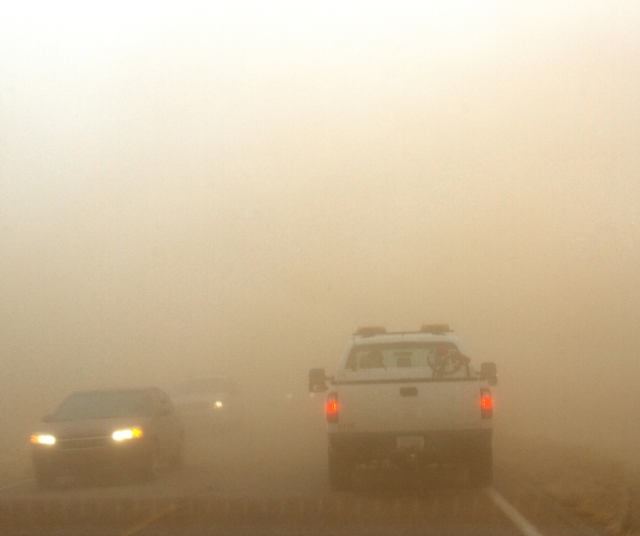Sand storms, also known as dust storms or haboob, are natural phenomena that have fascinated and terrified humanity throughout history. These weather events, characterized by violent winds that stir up sand and dust particles, can have devastating effects on the affected regions, but they also have stunning beauty and a unique ability to shape the landscape.
Origins and Causes of Sandstorms
Sandstorms originate mainly in arid and semi-arid regions, where the lack of vegetation and the presence of large areas of bare soil facilitate wind erosion. The combination of strong winds and loose sand particles creates ideal conditions for the formation of sandstorms. Most of these storms occur in desert areas, such as the Sahara in Africa, the Gobi Desert in Asia, and the Sonoran Desert in North America.
The main cause of sandstorms is the convergence of high and low atmospheric pressure systems. When a mass of warm, dry air meets a mass of cold air, a pressure gradient is produced that generates strong winds. These winds can reach extremely high speeds, lifting sand particles from the ground and creating a cloud of dust that extends for hundreds of kilometers.
In addition to meteorological factors, human activity can also contribute to the intensification of sandstorms. Deforestation, overexploitation of land and unsustainable agriculture can increase the amount of soil exposed to wind erosion, thus exacerbating the problem of sandstorms in certain regions.
Characteristics and Behavior of Sandstorms
Sand storms can vary considerably in size and duration, from small dust devils to vast storms covering thousands of square kilometers. Although they tend to occur more frequently during the warmer months of the year, they can also occur at any time when the right conditions are met.
A distinctive feature of sandstorms is the drastic reduction in visibility due to the dense cloud of dust suspended in the air. During a severe sandstorm, visibility can decrease to less than one meter, making navigation extremely dangerous for drivers, pilots and boaters.
Winds associated with sandstorms can reach speeds in excess of 100 kilometers per hour, causing soil erosion, damage to infrastructure, and destruction of vegetation. Wind-borne sand particles can penetrate the lungs and eyes, causing respiratory and eye health problems in exposed people.
Environmental and Ecological Impact
Sandstorms have a significant impact on the environment and ecosystems of the affected regions. Soil erosion reduces fertility and water retention capacity, hindering the growth of vegetation and the regeneration of natural ecosystems. In addition, the transport of sediments by wind can alter water courses, affecting aquatic fauna and water quality.
In some regions, sandstorms are an important natural phenomenon that plays a crucial role in the formation and maintenance of certain ecosystems. For example, in coastal deserts, sandstorms transport nutrients and minerals from the interior to coastal areas, thus enriching soils and promoting biodiversity.
However, the increase in the frequency and intensity of sandstorms due to climate change and human activity represents a threat to the stability of these fragile ecosystems. Desertification, the process by which fertile lands turn into deserts due to soil degradation, is an increasingly serious problem in many parts of the world, exacerbated by sandstorms and other climate-related phenomena.
Impact on Human Life and Societies
Sandstorms have significant consequences for human life and societies that depend on the affected ecosystems. In arid and semi-arid regions, where sandstorms are more frequent, agriculture, livestock and other economic activities can be seriously affected by the loss of fertile soil and environmental degradation.
Furthermore, sandstorms pose a direct danger to the health and safety of people living in affected areas. Inhaling dust and sand particles can cause respiratory problems, allergies, and lung diseases, especially in children, the elderly, and people with pre-existing respiratory conditions.
Infrastructure also suffers damage during sandstorms, as strong winds can down trees, utility poles, and transmission lines, causing power outages and disruptions to basic services. In addition, the accumulation of sand on roads, railways and airports can hinder transportation and communication, negatively affecting the economy and development of the affected regions.
Mitigation and Adaptation
To address the challenge of sandstorms, it is necessary to adopt mitigation and adaptation measures that reduce their impact on the environment and human life. This includes the implementation of sustainable land management practices, such as reforestation, crop rotation, and the construction of terraces and barriers to control wind erosion.
Improving infrastructure and building storm-resistant housing can help reduce damage caused by these extreme weather events. Furthermore, it is important to develop early warning systems and effective evacuation plans to protect vulnerable communities and minimize the risk of human loss during sandstorms.
At the international level, cooperation and coordination between countries affected by sandstorms are essential to effectively address this problem. The exchange of information, technology and resources can help strengthen the resilience of communities in the face of climate threats and promote sustainable development in affected regions.
